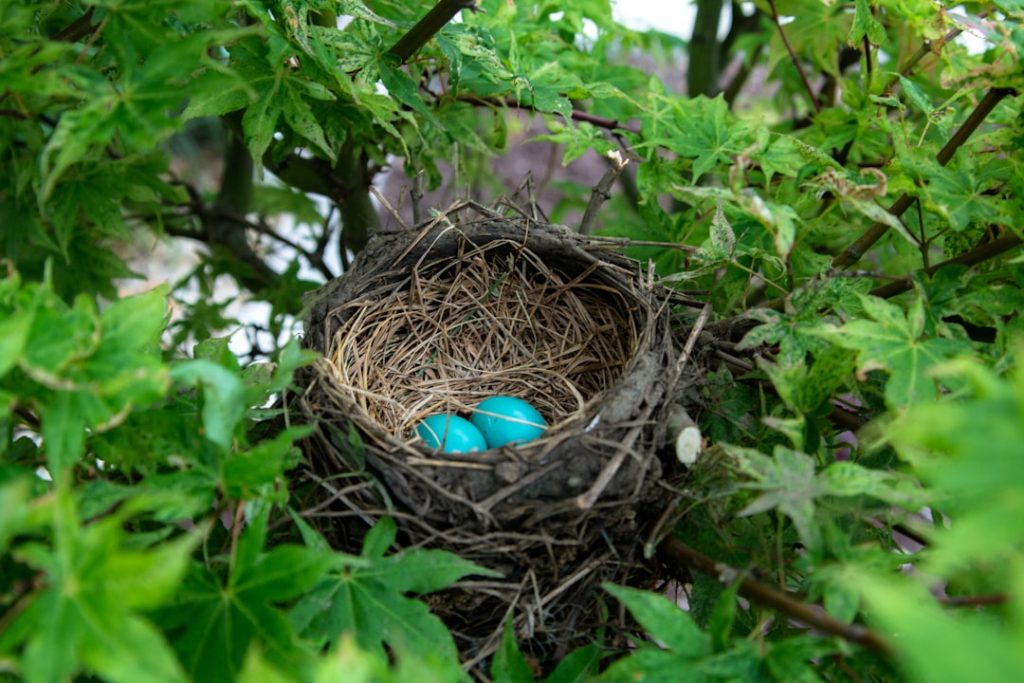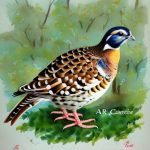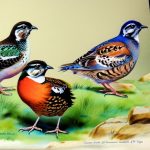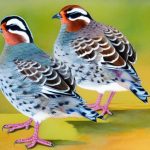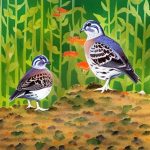The breeding season for Stubble Quail typically occurs during the spring and summer months, when the weather is warmer and food sources are more abundant. This is a crucial time for the survival and growth of the Stubble Quail population, as it is when they reproduce and raise their young. During this time, the male Stubble Quail will engage in courtship displays to attract a mate, and the female will lay eggs and care for the chicks once they hatch. The breeding season is a period of intense activity and importance for the Stubble Quail, as they work to ensure the continuation of their species.
The breeding season is also a time of vulnerability for the Stubble Quail, as they are more exposed and at risk of predation while engaging in courtship and caring for their young. This makes it essential for conservation efforts to be in place to protect the Stubble Quail during this critical time. By understanding the behavior, nesting habits, and challenges faced by the Stubble Quail during the breeding season, conservationists can work to implement strategies to safeguard their population and ensure their survival for future generations.
Table of Contents
- 1 Behavior and Courtship of Stubble Quail During Breeding Season
- 2 Nesting and Egg-Laying Habits of Stubble Quail
- 3 Incubation and Hatching of Stubble Quail Chicks
- 4 Parental Care and Feeding of Stubble Quail Chicks
- 5 Challenges and Threats During Stubble Quail Breeding Season
- 6 Conservation Efforts to Protect Stubble Quail During Breeding Season
- 7 FAQs
- 7.1 What is the breeding season for stubble quail?
- 7.2 How do stubble quail breed?
- 7.3 What is the role of the male stubble quail during the breeding season?
- 7.4 How many broods do stubble quail typically have during the breeding season?
- 7.5 What are the threats to stubble quail during the breeding season?
Key Takeaways
- Stubble quail breeding season typically occurs during the spring and summer months.
- During breeding season, male stubble quail engage in elaborate courtship displays to attract females.
- Female stubble quail build their nests on the ground, often in dense vegetation, and lay a clutch of 6-12 eggs.
- The incubation period for stubble quail eggs is around 18 days, and the chicks are precocial, meaning they are able to feed themselves shortly after hatching.
- Stubble quail chicks are cared for by both parents and are primarily fed a diet of insects and seeds.
Behavior and Courtship of Stubble Quail During Breeding Season
During the breeding season, male Stubble Quail will engage in elaborate courtship displays to attract a mate. These displays often involve puffing up their feathers, vocalizing loudly, and performing intricate dances to demonstrate their fitness and desirability as a mate. The male will also establish and defend a territory, using vocalizations and physical displays to ward off rival males and attract a female. Once a female is attracted to a male’s display, they will engage in mutual preening and other bonding behaviors before mating occurs.
The courtship behavior of Stubble Quail is not only fascinating to observe but also crucial for the continuation of their species. It is during this time that mating pairs are formed, and the groundwork is laid for the female to lay her eggs and care for the resulting chicks. Understanding the courtship behavior of Stubble Quail during the breeding season can provide valuable insights into their reproductive success and population dynamics, helping conservationists to develop targeted strategies for their protection.
Nesting and Egg-Laying Habits of Stubble Quail
Once a mating pair has been established, the female Stubble Quail will seek out a suitable nesting site to lay her eggs. The nest is typically a shallow depression on the ground, lined with grasses, leaves, and other plant materials to provide insulation and protection for the eggs. The female will lay a clutch of eggs, usually ranging from 8-12 in number, and will then begin the incubation process to keep them warm and safe from predators.
The nesting habits of Stubble Quail are adapted to their environment, with the female choosing a location that provides adequate cover and camouflage for her eggs. This can include dense vegetation, tall grasses, or other areas that offer protection from predators and the elements. By understanding the nesting habits of Stubble Quail during the breeding season, conservationists can work to identify and protect important nesting sites, ensuring the survival of future generations of Stubble Quail.
Incubation and Hatching of Stubble Quail Chicks
Once the eggs have been laid, the female Stubble Quail will begin the incubation process, sitting on the eggs to keep them warm and facilitate their development. This period of incubation typically lasts around 18-21 days, during which time the female will rarely leave the nest except to feed briefly. The eggs are sensitive to temperature fluctuations and predation during this time, making it essential for the female to remain vigilant and attentive to ensure their survival.
After the incubation period, the eggs will begin to hatch, with the chicks emerging one by one over a period of several hours. The newly hatched chicks are precocial, meaning they are born with their eyes open and are able to move around shortly after hatching. They are also covered in downy feathers, which provide some insulation and protection from the elements. The hatching of Stubble Quail chicks is a critical moment in their breeding season, as it marks the beginning of their journey to independence and survival in the wild.
Parental Care and Feeding of Stubble Quail Chicks
Once the chicks have hatched, both parents play a role in caring for and feeding them. The female will continue to brood the chicks to keep them warm and safe, while the male will help to protect the nest and forage for food to bring back to the young. The chicks are fed a diet of insects, seeds, and other small invertebrates, which provide essential nutrients for their growth and development. As they grow, the chicks will become more independent and begin to forage for food on their own, eventually reaching maturity and becoming capable of reproducing themselves.
The parental care and feeding of Stubble Quail chicks is crucial for their survival during the breeding season. It is a time of intense activity for both parents as they work tirelessly to ensure the health and well-being of their offspring. By understanding the feeding habits and nutritional needs of Stubble Quail chicks, conservationists can work to protect important food sources and habitats that are essential for their growth and development.
Challenges and Threats During Stubble Quail Breeding Season
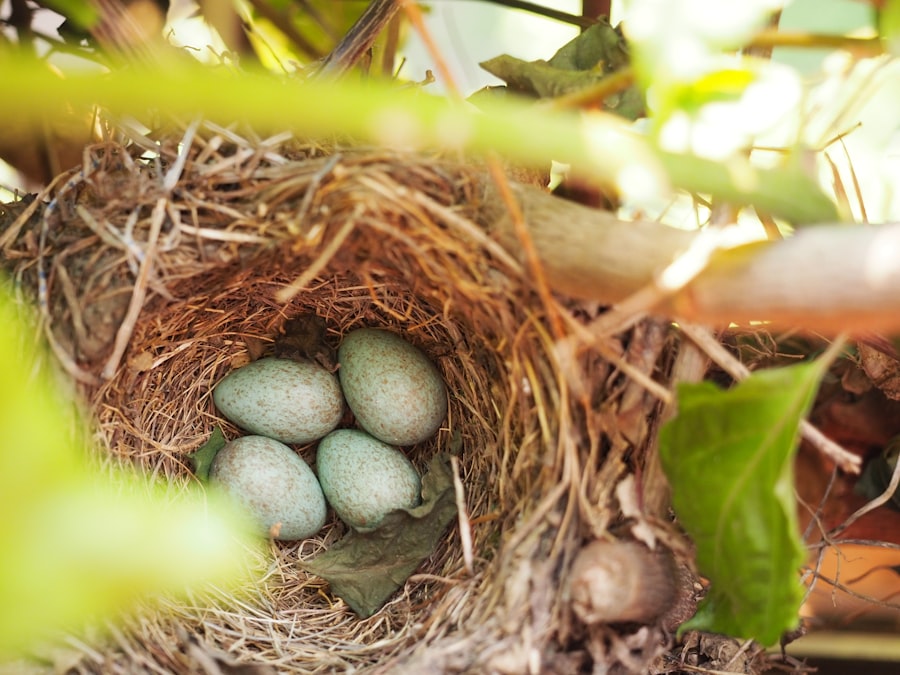
The breeding season presents numerous challenges and threats for Stubble Quail, including predation, habitat loss, climate change, and human disturbance. Predators such as foxes, cats, birds of prey, and snakes pose a significant risk to both eggs and chicks, making it essential for nesting sites to be well-hidden and protected. Habitat loss due to agriculture, urbanization, and land clearing also threatens the survival of Stubble Quail during the breeding season, as it reduces available nesting sites and food sources.
Climate change can also impact Stubble Quail breeding success, with extreme weather events such as droughts or floods affecting food availability and nesting conditions. Human disturbance from activities such as recreational off-road driving or livestock grazing can disrupt nesting sites and cause stress to breeding pairs, leading to reduced reproductive success. By understanding these challenges and threats faced by Stubble Quail during the breeding season, conservationists can work to implement targeted strategies to mitigate these risks and protect their population.
Conservation Efforts to Protect Stubble Quail During Breeding Season
Conservation efforts are essential for protecting Stubble Quail during the breeding season, with a focus on habitat preservation, predator control, and public awareness. By identifying important nesting sites and implementing measures to protect them from disturbance and habitat loss, conservationists can help ensure the survival of breeding pairs and their offspring. Predator control programs can also be implemented to reduce the impact of foxes, cats, and other predators on Stubble Quail populations, helping to increase reproductive success.
Public awareness campaigns can also play a crucial role in protecting Stubble Quail during the breeding season, by educating people about the importance of preserving their habitat and minimizing disturbance. By working with landowners, farmers, and other stakeholders, conservationists can promote sustainable land management practices that benefit Stubble Quail populations. These efforts can help ensure that future generations have the opportunity to observe and appreciate these fascinating birds in their natural environment.
In conclusion, the breeding season is a critical time for Stubble Quail, as they work to reproduce and raise their young in often challenging conditions. By understanding their behavior, nesting habits, challenges faced, and conservation efforts needed during this time, we can work to protect these birds and ensure their survival for generations to come. Through targeted conservation efforts and public awareness campaigns, we can help safeguard the future of Stubble Quail during their breeding season.
As the stubble quail breeding season approaches, it’s essential to ensure that these birds have access to a balanced diet. Understanding the dietary needs of quails is crucial for their health and reproduction. In a related article on PoultryWizard, you can learn about the vegetables that are beneficial for quails and how to incorporate them into their diet. By providing the right nutrition, you can support the breeding success of your quails and help them thrive during this critical time. Check out the article here for valuable insights into quail nutrition.
FAQs
What is the breeding season for stubble quail?
The breeding season for stubble quail typically occurs from September to January in Australia.
How do stubble quail breed?
Stubble quail are ground-nesting birds that build their nests in grassy or stubbly vegetation. The female lays a clutch of 6-12 eggs and incubates them for about 18 days.
What is the role of the male stubble quail during the breeding season?
The male stubble quail plays a role in defending the nesting territory and may also help with incubation and caring for the young.
How many broods do stubble quail typically have during the breeding season?
Stubble quail may have multiple broods during the breeding season, especially in areas with favorable conditions and abundant food resources.
What are the threats to stubble quail during the breeding season?
Threats to stubble quail during the breeding season include predation by foxes, feral cats, and birds of prey, as well as habitat loss and degradation. Agricultural practices such as grazing and cropping can also impact nesting success.
Meet Walter, the feathered-friend fanatic of Florida! Nestled in the sunshine state, Walter struts through life with his feathered companions, clucking his way to happiness. With a coop that’s fancier than a five-star hotel, he’s the Don Juan of the chicken world. When he’s not teaching his hens to do the cha-cha, you’ll find him in a heated debate with his prized rooster, Sir Clucks-a-Lot. Walter’s poultry passion is no yolk; he’s the sunny-side-up guy you never knew you needed in your flock of friends!

